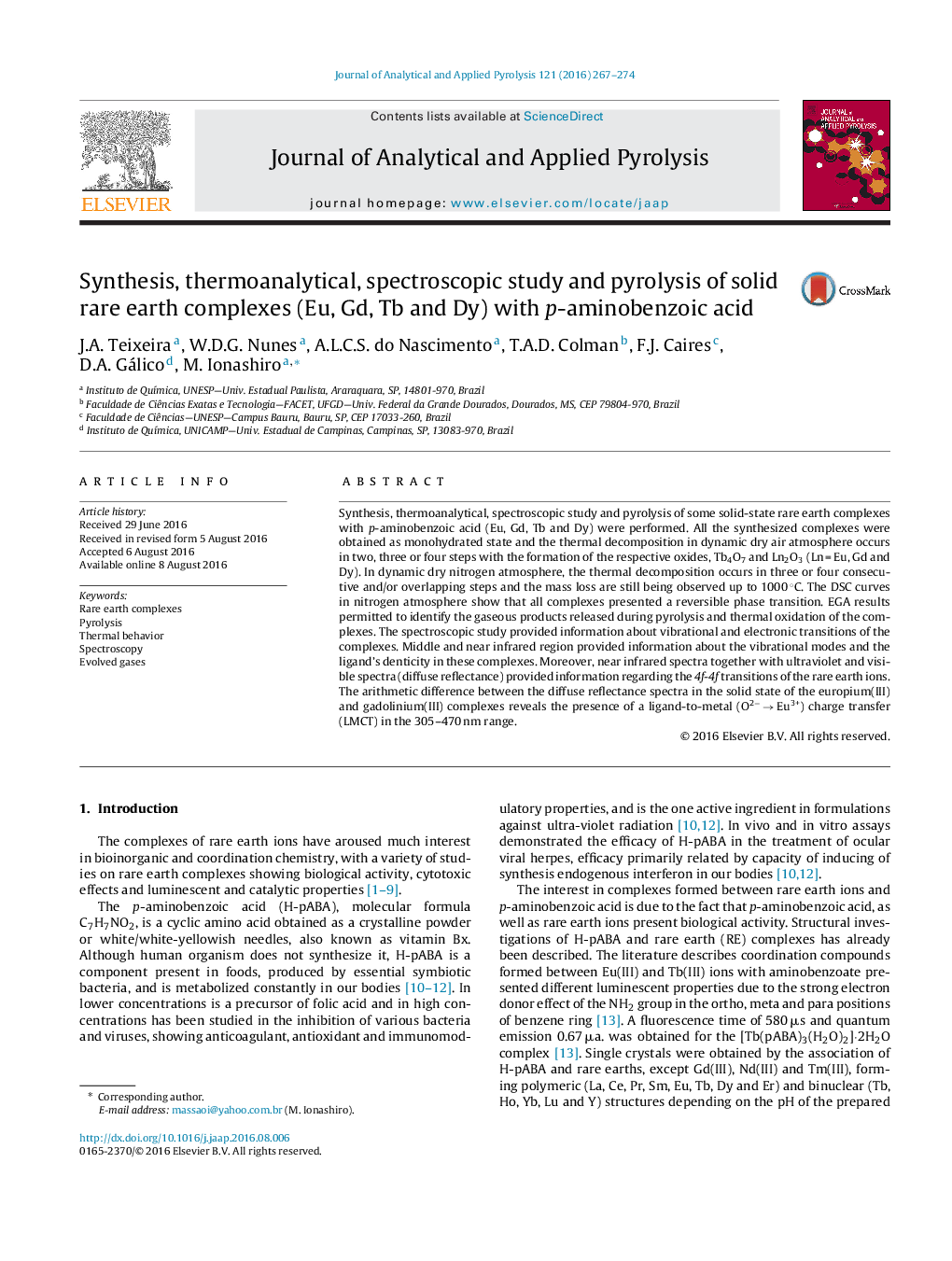| Article ID | Journal | Published Year | Pages | File Type |
|---|---|---|---|---|
| 5134728 | Journal of Analytical and Applied Pyrolysis | 2016 | 8 Pages |
â¢The stoichiometry of compounds was established by TG, EA and complexometry;.â¢Thermal behavior and pyrolysis of some rare earth complexes (Eu, Gd, Tb and Dy) have not been published.â¢In dynamic atmosphere of nitrogen rare earth complexes exhibit a reversible phase transition.â¢For europium complexe, the presence of LMCT state in the 22000-24000 cmâ1 region promotes a strong quenching in the luminescence.
Synthesis, thermoanalytical, spectroscopic study and pyrolysis of some solid-state rare earth complexes with p-aminobenzoic acid (Eu, Gd, Tb and Dy) were performed. All the synthesized complexes were obtained as monohydrated state and the thermal decomposition in dynamic dry air atmosphere occurs in two, three or four steps with the formation of the respective oxides, Tb4O7 and Ln2O3 (Ln = Eu, Gd and Dy). In dynamic dry nitrogen atmosphere, the thermal decomposition occurs in three or four consecutive and/or overlapping steps and the mass loss are still being observed up to 1000 °C. The DSC curves in nitrogen atmosphere show that all complexes presented a reversible phase transition. EGA results permitted to identify the gaseous products released during pyrolysis and thermal oxidation of the complexes. The spectroscopic study provided information about vibrational and electronic transitions of the complexes. Middle and near infrared region provided information about the vibrational modes and the ligand's denticity in these complexes. Moreover, near infrared spectra together with ultraviolet and visible spectra (diffuse reflectance) provided information regarding the 4f-4f transitions of the rare earth ions. The arithmetic difference between the diffuse reflectance spectra in the solid state of the europium(III) and gadolinium(III) complexes reveals the presence of a ligand-to-metal (O2â â Eu3+) charge transfer (LMCT) in the 305-470 nm range.
